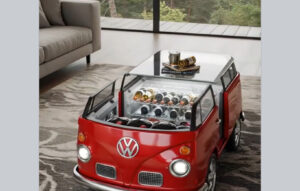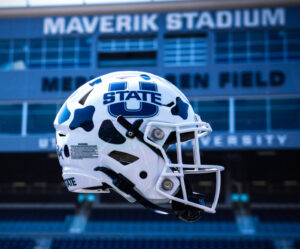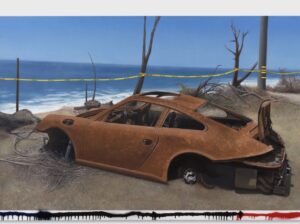In a world increasingly preoccupied with sleek minimalism, digital connectivity, and algorithm-driven aesthetics, a certain rebellion is quietly taking place in the realm of interior design. It does not announce itself with cold materials or Bauhaus anonymity. Instead, it rolls in—chrome-bumpered, pastel-painted, and decidedly analog. Meet the VW Bus coffee table: a sculptural furnishing that doubles as both conversation piece and time machine. Equal parts whimsy and function, it brings mid-century counterculture into the contemporary living room, distilling decades of motion, freedom, and flair into a single, low-slung centerpiece.
This editorial unpacks the layered cultural, aesthetic, and material meanings behind the VW Bus coffee table—more than a kitschy novelty, it is a crystallization of retro romanticism retooled for the design-conscious 21st century. In doing so, we trace the lineage of the Volkswagen Type 2 (aka the Microbus), its place in Western cultural mythology, and how this furniture homage offers both nostalgic comfort and a challenge to the sterile, disembodied spaces of contemporary life.
The Rolling Icon: A Brief Cultural History of the VW Bus
To appreciate the full resonance of the VW Bus coffee table, one must begin with its namesake. Originally introduced by Volkswagen in 1950 as the Type 2 Transporter, the VW Bus became one of the most recognizable vehicles of the post-war 20th century. From the beatniks of the 1950s to the flower children of the 1960s, and even the surf tribes of the 1970s, the Microbus was more than a mode of transport—it was a vessel for cultural ideology.
The Microbus represented freedom of movement in both a literal and symbolic sense. It was affordable, customizable, and anti-corporate in spirit—an antidote to the muscle cars and chrome monsters that dominated American highways. It was the automobile of the outsider, the artist, the nomad, the anti-war protestor. And that status still clings to its silhouette today, making it one of the few car designs that transcends utility to function as a cultural signifier.
Translating that into a coffee table is not merely a design move—it is an act of preservation. A chrome-legged time capsule placed at the center of the home.
From Highway to Hearth: Domesticating the Road Trip Aesthetic
The VW Bus coffee table marks a curious reversal of roles. Once a symbol of motion, it now finds itself fixed, domestic, static. But therein lies the poetry. This table doesn’t just bring retro aesthetics into a living room—it domesticates the very concept of freedom. It allows for an emotional journey, even when the body remains still. The curved fender now holds candles instead of headlights. The once-roadworthy tires now rest on hand-knotted rugs. A vehicle once used to cross deserts and coastlines now serves tea and nostalgia in equal measure.
This is where its charm lies. The table isn’t just quirky or nostalgic—it reframes rebellion and freewheeling as aesthetic values. It converts history into hospitality. It makes a spectacle of comfort.
This sentiment aligns with a broader cultural shift we’ve seen post-2020—where domestic spaces are reimagined not only for function but for joy. Where homes are curated like museums of selfhood, filled with references to past lives, idealized eras, and inherited symbols of identity. The VW Bus coffee table fits snugly within this movement: playful, personal, and narratively rich.
The Material Palette: Engineering Memory
Many versions of the VW Bus coffee table are made from either actual salvaged parts or high-fidelity reproductions of the front portion of the Microbus. The materials—aged metal, tempered glass, hand-painted enamel, sometimes even working headlights—are carefully chosen to invoke not just accuracy but emotion. This is industrial design made emotional.
Glass tabletops float like windshield panes, offering transparency both literal and metaphorical. Beneath the glass lies the bus’s face: headlights wide like eyes, grill lines like smile creases. Some tables even light up, casting a soft glow that mimics the halo of highway headlights on a foggy night. It is ambiance crafted with engineering precision.
Such construction techniques also nod to the growing interest in upcycled design, where waste is reimagined as wonder. A VW front-end found in a junkyard becomes the centerpiece of a loft in Berlin, a bungalow in Venice Beach, or a ski cabin in the Alps. These are objects that embody second chances.
Retro-Futurism at Rest: Style and Symbolism
The appeal of retro furniture isn’t new. From Eames lounge chairs to tulip tables, mid-century modernism has long dominated the tastes of those who appreciate clean lines and optimistic form. But the VW Bus coffee table takes a different route. It is not sleek, nor especially modernist. Instead, it taps into retro-futurism—a design philosophy that looks backward in order to move forward.
Its playful presence resists the sterility of Scandinavian minimalism or the high-gloss intimidation of ultra-modern interiors. Instead, it invites imperfection, laughter, and storytelling. Its pastel tones recall ice cream parlors and roadside diners. Its rounded edges and vintage lettering echo a time when mass production still carried soul.
To own a VW Bus coffee table is to reject design snobbery. It’s to say: I want beauty that smiles back. I want history that glows.
Furniture as Conversation and Communal Memory
What makes the VW Bus coffee table particularly potent is its ability to provoke conversation. Unlike traditional coffee tables that often fade into the background, this piece acts as a catalyst. It asks questions. Where did you see your first VW Bus? Who did you road trip with in the summer of ’76? Have you ever lived out of a van?
It becomes a locus for shared memory, both real and imagined. Guests do not ignore it—they orbit it. Its very presence opens a portal to collective nostalgia, even for those too young to remember its heyday firsthand. Through the magic of pop culture, the bus has entered the collective imagination: in “Little Miss Sunshine,” in surf documentaries, in music videos and Instagram accounts romanticizing van life.
Even without owning or ever riding in one, people feel they know it. That’s the true measure of iconography.
The Design Democrat: High-Touch, Low-Snob Appeal
Perhaps the most radical thing about the VW Bus coffee table is its accessibility—not in price necessarily, but in spirit. While it may sit among high-end decor, it carries with it the DNA of the people’s car. It democratizes design through sentiment, not status.
You don’t need a design degree to appreciate its charm. You don’t need to know about Bauhaus or brutalism. You simply need to feel the tug of memory, or the joy of a well-told story. The VW Bus coffee table, for all its metal and glass and retro curves, functions most effectively as a mood board for the soul.
It whispers: Let’s never grow all the way up.
Cross-Genre Interiors: Styling the Bus
Despite its vivid aesthetic, the VW Bus coffee table is surprisingly versatile. It can punctuate a boho living room filled with woven textures and hanging plants. It can sit comfortably in a minimalist loft as an ironic centerpiece. It can match a music lover’s den, a retro-themed guest room, or even a covered patio designed for cocktails and vinyl records.
The key to styling it lies in tension: pairing it with the unexpected. Think: sheepskin throws over chrome chairs. A Bauhaus lamp nearby. Vintage travel posters. A stack of glossy monographs beside a bowl of jellybeans. The table becomes an anchor around which eclecticism orbits.
It is both prop and protagonist.
Sustainability and the Second Life of Icons
Many iterations of this table are made from recycled parts, making it a quiet ally in the war against throwaway culture. This is not furniture destined for landfills. It is furniture that reminds us of legacy—not only of a brand or design, but of material.
The idea of repurposing an old vehicle into a piece of furniture echoes larger global movements toward circular design and sustainability. Just as vintage clothing and reworked sneakers hold cultural cachet, so too does furniture that tells a story before it even enters your life. The VW Bus coffee table is inherently narrative. It is inherently sustainable.
It champions an ethic of reuse, but it does so with flair.
Impression
In the VW Bus coffee table, the romance of the open road meets the intimacy of the domestic space. It invites the spirit of rebellion, nostalgia, and carefree living into the quietest corners of the home. It transforms a symbol of escape into a source of connection.
Indeed, it’s nostalgic yet it is also deeply intentional. It resists the modernist urge to disappear and instead becomes something bolder: a rolling sculpture turned altar to good times, strange roads, and the places we still hope to visit—if only in memory.
In a living room surrounded by glowing screens, antiseptic surfaces, and algorithm-curated neutrality, the VW Bus coffee table offers a soulful alternative. A reminder that even when we are still, some part of us wants to move.
No comments yet.









